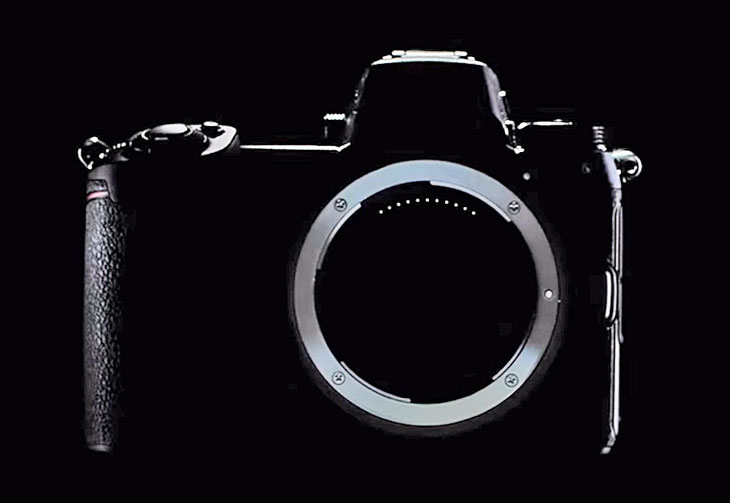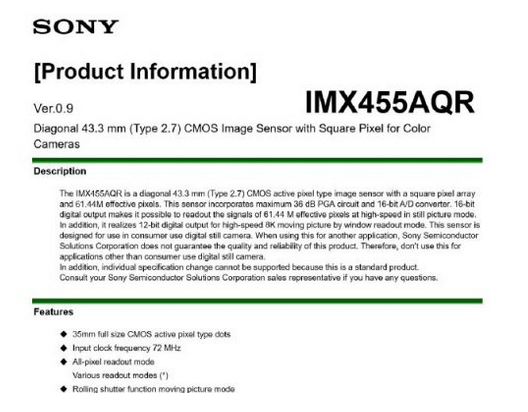
Anonymous rumors suggest that Sony New 60MP FF BSI Hybrid CMOS Sensor will be used in Nikon upcoming high-resolution Mirrorless and DSLR camera. The IMX 455 is a Hybrid Sensor can carries phase detect AF points inside it, so for sure this sensor will be used in Nikon upcoming Mirrorless camera [possibly Nikon Z8]. Now a altered version of the same sensor [without phase detect AF pixels inside it] can be used in Nikon D850 successor, the upcoming Nikon D860 / D900 DSLR.
Product Update cycle of Nikon D8xx series DSLRs suggest us that NO Nikon D850 successor coming in 2019. we have to wait till late 2020 for next iteration of Nikon D850 DSLR.
Based on the rumors we have, coming from anonymous sources. Before the update of Nikon D850 DSLR, Nikon high-resolution mirrorless camera will arrive in Q3 or Q4 of 2020. If they move on scheduled path. [we are not sure about the model name, it Can be Nikon Z8 or something else].

Sony 60 MP Sensor specification
- IMX455 (Low-Spec of IMX551 Prototype):
- Effective pixels: 9600×6400
- Recommend recording pixels: 60MP
- 11/12/14/16Bit ADC
- Full Pixel 9fps/14Bit ADC
- SLVS-EC 8Lane
- Single ADC in Video Mode
- 12-ADC in Still Picture Mode
- Native ISO 64/400
We will update you soon as we get any more information.
Check out Ongoing Featured and Lightning Deals at Amazon.com | Amazon.UK | B&H Store
Follow us on our social pages FACEBOOK | TWITTER | INSTAGRAM to get live news + rumors 24X7







They are going crazier than i thought. We will need new bigger computer to work those gigantic files.
I agree with Guy.
Ridiculous file sizes for benefit of practically no one.
I still have Nikon D80, a 12Mp camera and have enlarged some photos to A3 with excellent results.
At this stage, I use Nikon D7000 a Fujifilm X-E2, both 16Mp cameras and, again, enlargements to A4 and A3 present no problem at all.
IMHO, a 24-26Mp is quite OK for an average photographer for next 20 years. Anything over that, for 90% of photographers, is just a useless and expensive gimmick.
yes… but as you say ‘90% of photographers’ have the option to just buy something else – just buy an ‘average’ camera. There’s 100s of options. Clearly this kind of innovation and leading edge technology is not intended for the ‘average photographer’. There definitely are photographers that will relish this extra capability. Of course! This kind of innovation opens up untold possibilities. Striving for excellence and continual improvements in capability – brands interested in ‘quality’ need to do that.
Only 60MP? I’m waiting for the 100 Gaga-pixel sensor were i need 1 SSD for each picture so i can finally pixel peep into the blurry images because no glas on this world can resolve this resolution 😉
I just think it is the inevitable advance of science and technology. No reason to stop it, though. Ideally, hundreds of megapixels of resolution in a cigarette pack sized camera, with photon computers, to do the post processing, and magnetic powered vehicles, to take us from point A to B, and no dictators and lots of friends in other galaxies. The future looks unimaginable and fabulous !
The Sony is already out and MSRP will be $3500 for their 61MP powerhouse. Nikon will be compelled to at least meet that price with the Z8 and D860. Technology and competition is taking off for the benefit of everyone. My old Mac Laptop has been upgraded so file size not an issue.
Megapixels are always welcome. But you have to ask do they absorb the light as sensitively as the less MP sensors?
More importantly… not many people will have the lenses that are capable of even landing light accurately on those megapixels. In fact it’s a real problem when deciding what gear to buy… it would be nice to know if there are diminishing returns for certain lenses at certain megapixels.
I really love the high resolution cameras. I use Nikon D850 in a Subal housing for macro/super macro underwater, and to frame an amphipode only 4-5 mm long and look at rhe facett eyes is fantastic. Only problem with all new cameras is that every time changing camera I need to buy a new housing with a price higher than the camera.